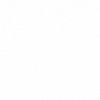READABILITY OF TEACHING MATERIALS BY STUDENTS OF STABN SRIWIJAYA BASED ON FLESCH FORMULA
DOI:
https://doi.org/10.35473/po.v5i1.1209Keywords:
readability, teaching material, Flesch FormulaAbstract
As prospective educators, students must have the competence to write good teaching materials. One indicator of good teaching materials is readability in accordance with the level of education of students. This study aims to determine the legibility of teaching materials by students using the Flesch Formula. The research method used is descriptive quantitative with instruments in the form of performance tests as a data collection tool. The results of this study indicate: (1) based on measurements using the Flesch Formula, 24% of teaching materials are in accordance with the specified readability level and 76% of teaching materials are not in accordance with the specified readability level; (2) A total of 17% of teaching materials are included in the category of moderately easy, 4% easy, 31% moderate, 24% quite difficult, 21% difficult, and 3% very difficult; and (3) other factors that cause incompatibility of teaching materials made by students are sentences that are too complex with the number only ranging from 2-7 sentences every 100 words. Therefore, prospective teachers should develop the skills of writing teaching materials well by practicing independently or under the guidance of the lecturer. Institutions can also make policies to deepen the writing of teaching materials for students in existing courses or insert new courses in the curriculum structure.
References
Astuti, S. P. (2018). Penyusunan Kalimat Studi Kasus Mahasiswa Darma Siswa Universitas Diponegoro. Nusa: Jurnal Ilmu Bahasa Dan Sastra. https://doi.org/10.14710/nusa.13.2.190-200
Ghufron, S., Kasiyun, S., & Hidayat, M. T. (2020). Kesalahan Kalimat Bahasa Indonesia dalam Skripsi Mahasiswa. BELAJAR BAHASA: Jurnal Ilmiah Program Studi Pendidikan Bahasa Dan Sastra Indonesia. https://doi.org/10.32528/bb.v5i1.3067
Gumono, G. (2016). ANALISIS TINGKAT KETERBACAAN BUKU SISWA BAHASA INDONESIA KELAS VII BERBASIS KURIKULUM 2013. Diksa : Pendidikan Bahasa Dan Sastra Indonesia. https://doi.org/10.33369/diksa.v2i2.3300
Heryani, H. (2019). KEMAMPUAN MAHASISWA MENGGUNAKAN KALIMAT EFEKTIF DALAM MENULIS KARYA ILMIAH. Jurnal Pendidikan Bahasa. https://doi.org/10.31571/bahasa.v8i1.1134
Hidayati, P. P., Ahmad, A., & Inggriyani, F. (2018). Penggunaan Formula Grafik Fry untuk Menganalisis Keterbacaan Wacana Mahasiswa PGSD. Mimbar Sekolah Dasar. https://doi.org/10.17509/mimbar-sd.v5i2.11496
Janan, D., & Wray, D. (2012). Readability : The Limitations of an Approach through Formulae. The British Educational Research Association Annual Conference.
Kountur, R. (2007). Metode Penelitian. Metode Penelitian.
MURSYADAH, U. (2021). TINGKAT KETERBACAAN BUKU SEKOLAH ELEKTRONIK (BSE) PELAJARAN BIOLOGI KELAS X SMA/MA. TEACHING : Jurnal Inovasi Keguruan Dan Ilmu Pendidikan. https://doi.org/10.51878/teaching.v1i4.774
Pebriana, P. H. (2021). Analisis Keterbacaan Buku Teks Siswa Kelas IV Pada Tema I Dengan Menggunakan Grafik Fry. Jurnal Pendidikan Dan Konseling (JPDK). https://doi.org/10.31004/jpdk.v2i2.1340
Reni Anggraeni, A. Y. L. S. (2018). KETERBACAAN BUKU AJAR BAHASA INDONESIA DI SEKOLAH MENENGAH PERTAMA (TEXT BOOK READABILITY OF INDONESIAN LANGUAGE IN JUNIOR HIGH SCHOOL). JURNAL BAHASA, SASTRA DAN PEMBELAJARANNYA. https://doi.org/10.20527/jbsp.v7i2.4428
Sadjati, I. (2017). Hakikat Bahan Ajar. Pendidikan. Jakarta.
Saptanto, D. D., & Wibowo, T. A. (2018). Relasi Game Warspear dan Kemampuan Berbicara Serta Kosakata Mahasiswa Sastra Inggris Universitas Ngudi Waluyo. PHILOSOPHICA Jurnal Bahasa, Sastra, Dan Budaya. https://doi.org/10.35473/po.v1i1.120
Saptono, D., & Ningsih, T. W. R. (2014). PERBANDINGAN FORMULA GUNNING FOG INDEKS DAN FLESCH LEVEL PADA UJI KETERBACAAN TEKS Debyo Saptono Tri Wahyu Retno Ningsih Univers. Prosiding Seminar Ilmiah Nasional Komputer Dan Sistem Intelijen (KOMMIT 2014, 8(Kommit), 155–162. https://scholar.googleusercontent.com/scholar?q=cache:Bq0U-zufpc8J:scholar.google.com/+Saptono,+D.,+Wahyu,+T.+2014.+“Perbandingan+formula+Gunning+Fog+Indeks+dan+Flesch+Level+Pada+Uji+Keterbacaan+Teksâ€.+KOMMIT.+ISSN+2302-3740.+Vol.+8+(1)+:155-162.&hl=id&as
Saroni, N., Widodo, H., & Mudiono, A. (2016). Analisis Keterbacaan Teks pada Buku Tematik Terpadu Kelas V SD Berdasarkan Grafik Fry. Prosiding Seminar Nasional KSDP Prodi S1 PGSD: Konstelasi Pendidikan Dan Kebudayaan Indonesia Di Era Globalisasi.
Widyaningsih, N., & Zuchdi, D. (2015). UJI KETERBACAAN WACANA PADA BUKU TEKS BAHASA INDONESIA KELAS V SD NEGERI DI KECAMATAN WONOGIRI. LingTera. https://doi.org/10.21831/lt.v2i2.7373
Yasa, K., Made, S., & Nengah, M. (2013). KECERMATAN FORMULA FLESCH, FOG INDEX, GRAFIK FRY, SMOG, DAN BI SEBAGAI PENENTU KEEFEKTIFAN TEKS BERBAHASA INDONESIA. JURNAL PENDIDIKAN DAN PEMBELAJARAN BAHASA INDONESIA. Vol.2, 1-12.
Downloads
Published
Issue
Section
License
Copyright (c) 2022 Suntoro Suntoro, Subyantoro Subyantoro, Rahayu Pristiwati

This work is licensed under a Creative Commons Attribution-ShareAlike 4.0 International License.
Copyright notice:
- Authors retain copyright and grant the journal right of first publication with the work simultaneously licensed under a Creative Commons Attribution License-ShareAlike 4.0 (CC-BY-SA 4.0) that allows others to share the work with an acknowledgment of the work's authorship and initial publication in this journal.
- Authors are able to enter into separate, additional contractual arrangements for the non-exclusive distribution of the journal's published version of the work (e.g., post it to an institutional repository or publish it in a book), with an acknowledgment of its initial publication in this journal.
- Authors are permitted and encouraged to post their work online (e.g., in institutional repositories or on their website) prior to and during the submission process, as it can lead to productive exchanges, as well as earlier and greater citation of published work (See The Effect of Open Access)


